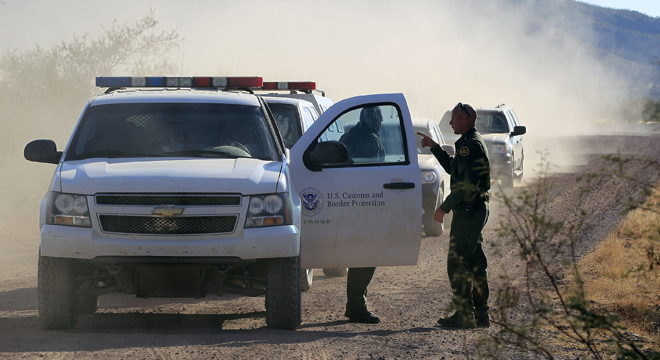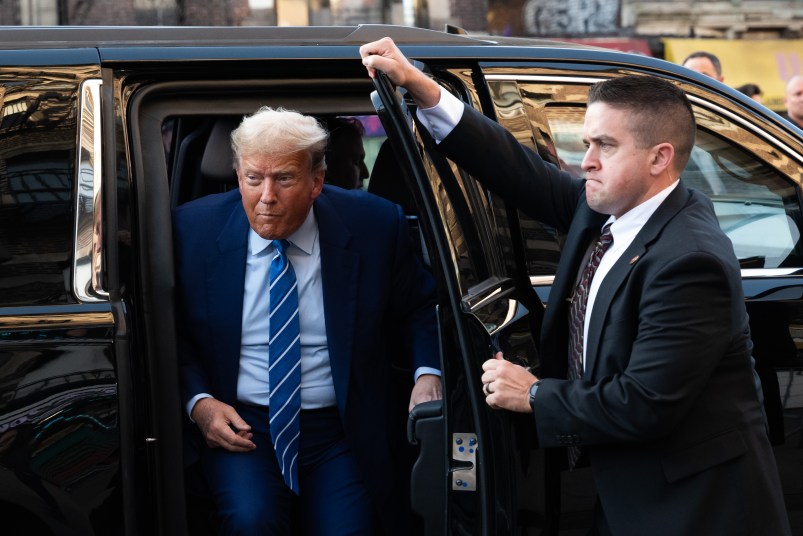SAN DIEGO (AP) — Border Patrol agents may continue using deadly force against rock-throwers, the chief of the agency said, despite the recommendation of a government-commissioned review to end the practice.
The Police Executive Research Forum, a nonprofit group that advises law enforcement agencies, recommended that the Border Patrol and its parent agency, Customs and Border Protection, stop the use of deadly force against rock throwers and assailants in vehicles, Border Patrol Chief Mike Fisher said.
Both recommendations were part of a broader internal review of CBP’s use-of-force policies and practices that began last year. The measures were not included in a revised policy announced on Sept. 25 that calls for more training and better record-keeping.
CBP considered the proposed curbs “very restrictive,” Fisher told The Associated Press.
Under current policy, agents can use deadly force if they have a reasonable belief that their lives or the lives of others are in danger.
“We shouldn’t have carve-outs in our policy and say, except for this, except for that,” Fisher said. “Just to say that you shouldn’t shoot at rock-throwers or vehicles for us, in our environment, was very problematic and could potentially put Border Patrol agents in danger.”
CBP has not released the full findings of the Police Executive Research Forum. Fisher’s comments are the most publicly detailed about them.
The internal review began last year after 16 members of Congress raised concern about the May 2010 killing of Anastasio Hernandez, an unarmed Mexican who died from stun gun wounds at San Diego’s San Ysidro port of entry. Authorities have said he was being combative while being returned to Mexico. The Justice Department is investigating that killing.
Hernandez was one of 20 people killed by CBP officials since 2010, including eight who died in rock-throwing incidents with Border Patrol agents, according to the American Civil Liberties Union.
Fisher repeated the agency’s long-standing position that rocks are lethal weapons. Smugglers have long pelted agents with rocks, bottles and other objects — often from Mexico — hoping to create an opening elsewhere along the border when agents rush to assist colleagues being pelted.
Agents were attacked with rocks 339 times in the 2011 fiscal year, more than any other type of assault, according to the Department of Homeland Security inspector general. They responded with gunfire 33 times and with less-than-lethal force — a category that includes pepper spray and batons — 118 times.
Rock attacks fell to 185 in the 2012 fiscal year, the second most common type of assault. Agents fired a gun 22 times and responded 42 times with less-than-lethal force.
The proposed ban on firing at vehicles would have brought the Border Patrol in line with some metropolitan police departments, Fisher said. But he pointed out that the federal agency operates in much different terrain.
“You don’t want to just start shooting indiscriminately at a vehicle and try to blow out tires like they do on TV, but our environment is totally different,” Fisher said. “In many cases, unlike a concrete jungle, you have a very narrow trail and the Border Patrol agent doesn’t always have the ability to get out of the way.”
Activists were disappointed that CBP rejected the recommendations.
“We’ve long held that deadly force should be limited to the most exceptional circumstances,” said Andrea Guerrero, executive director of Alliance San Diego, who attended a meeting with Obama administration officials at the White House in September that covered the topic.
“The Border Patrol has yet to demonstrate that that’s the appropriate level of force in the cases that have happened,” Guerrero said.
Shawn Moran, spokesman for the National Border Patrol Council, the union representing Border Patrol officers, welcomed the agency’s position.
“Almost every Border Patrol agent has been rocked at one point or another,” Moran said. “I know agents here that have had vehicles accelerate toward them, attempt to run them down.”
Fisher rejected any suggestion that Border Patrol agents were trigger-happy.
“When you look at that environment, that workspace, I think our agents show a great deal of restraint when it comes to use of deadly force,” he said.
Copyright 2013 The Associated Press. All rights reserved. This material may not be published, broadcast, rewritten or redistributed.










